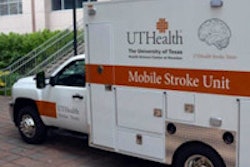Dr. Andrei Purysko and colleagues evaluated a single-energy protocol (120 kVp; weight-based mAs) and a dual-energy protocol (100/Sn 140 kVp; mAs adjusted to match the CT dose index volume [CTDIvol] of a weight-based mAs single-energy scan), according to the abstract. They recorded exposure and image noise information from each phase on each scanner.
The group also tested the protocols using multiple dose levels on a semianthropomorphic phantom. Abdominal dual-energy CT (DECT) had a significantly lower radiation dose at similar or equal noise levels compared to single-energy CT in both clinical and phantom studies, Purysko told AuntMinnie.com.
"These results are critical for implementation of DECT of the abdomen in clinical practice, as they show that this technique does not necessarily come at the expense of higher radiation doses," he said.



















